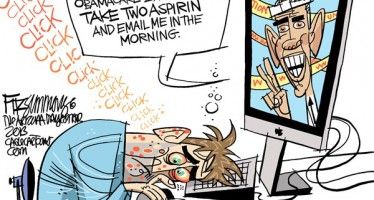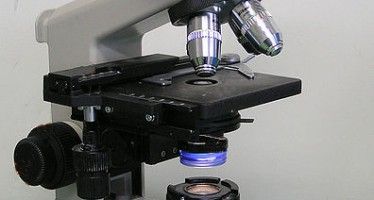Brown Pushes Cap & Trade Pension Grab
By WAYNE LUSVARDI
Call it pension “entrap and raid” — instead of environmental “cap and trade.”
Gov. Jerry Brown is floating an idea to divert $1 billion from the auction of pollution credits under California’s Cap and Trade Program to plug a $9 billion gap in the state-operating budget. The $1 billion would go toward funding the huge shortfall in funding pensions.
The Jan. 11 issue of the Los Angeles Times is reporting that Brown’s proposal is enraging business organizations who are calling it a back-door tax.
This comes as no surprise to business groups who sponsored Proposition 26 on the Nov. 2010 ballot to plug a loophole in California’s Cap and Trade law that could have allowed it to impose “fees, levies, charges or revenue allocations” without a supermajority — two thirds — vote of the electorate. Is it coincidental that, in the official ballot arguments for Prop. 26, the fiscal impact was shown as $1 billion?
Cap and Trade is a mandatory emissions trading program that forces industries to either reduce pollution or buy pollution credits from low polluting industries that have credits to sell. The first auction, scheduled for August 2012, is coincidentally estimated to raise $1 billion. The monies confiscated from businesses would be used to create green “jobs and deliver public health, economic and environmental benefits.” But now part of those funds are proposed to be diverted to be put into the state general fund, which Prop 26. forbids.
Tax Farming?
The governor’s proposal confirms suspicions of critics that Cap and Trade is nothing but a “tax farming” scheme with little net environmental benefit. Tax farming was a system used in ancient Persia, Egypt, Rome and Greece of outsourcing taxation to “tax farmers,” who bid at auction for the contract rights to collect a particular tax and make money doing so.
Under California’s Cap and Trade law, it will also be mandatory for municipal electricity and water providers to buy pollution credits. This would result in a tax on utility rates. Electricity and water ratepayers could end up paying for state pensions in their energy and water bills.
Brown’s proposal seems to be an action of desperation after State Controller John Chiang announced that state revenues for December fell $1.4 billion under the state’s projections. A revenue gap of $2.5 billion has grown since the state budget was adopted in June 2011.
Quoted in the LA Times, Jim Metropulos, a lobbyist for the Sierra Club, stated that perhaps Cap and Trade auction receipts could be used to “backfill” existing state environmental programs. These funds conceivably could be used to free up other general fund monies for other purposes. But California’s Cap and Trade Law –AB 32, the Global Warming Solutions Act of 2006 — was not meant to be a way to partly backfill the state treasury.
A Trial Balloon
Brown’s proposal is apparently what is called a “trial balloon” in politics. William Safire’s Political Dictionary defines a trial balloon as “a testing of public reaction by suggestion of an idea.”
Business groups are already saying they will legally challenge any such proposal to divert cap and trade funds to the state general fund.
Brown’s trial balloon may not fly with voters who are facing $6 billion in higher annual electricity costs due to the imposition of California’s new Green Power law.
Brown has yet to float a trial balloon on many of the recommendations of the State Legislative Analyst’s Office on where to cut state government, including $3.5 billion in annual tax credits the LAO says “are not achieving their stated purpose.”
It remains to be seen whether Brown’s trial balloon will stay afloat or will plummet back to mother earth.
Related Articles
On energy resources, will CA ignore lessons of North Dakota?
It was just less than two years ago that City Journal had the first high-profile story laying out the enormous
CA legislators put Kaiser under microscope
SACRAMENTO — When the Legislature returns from its July recess, it will take up several health-care bills. A top one





